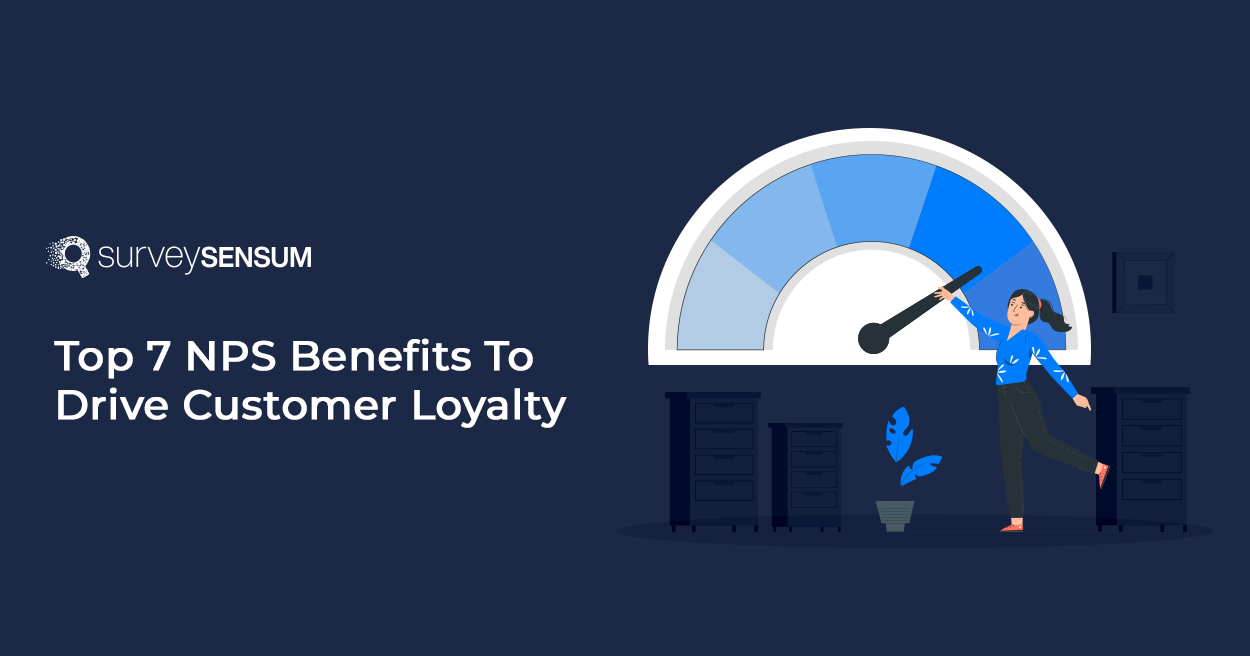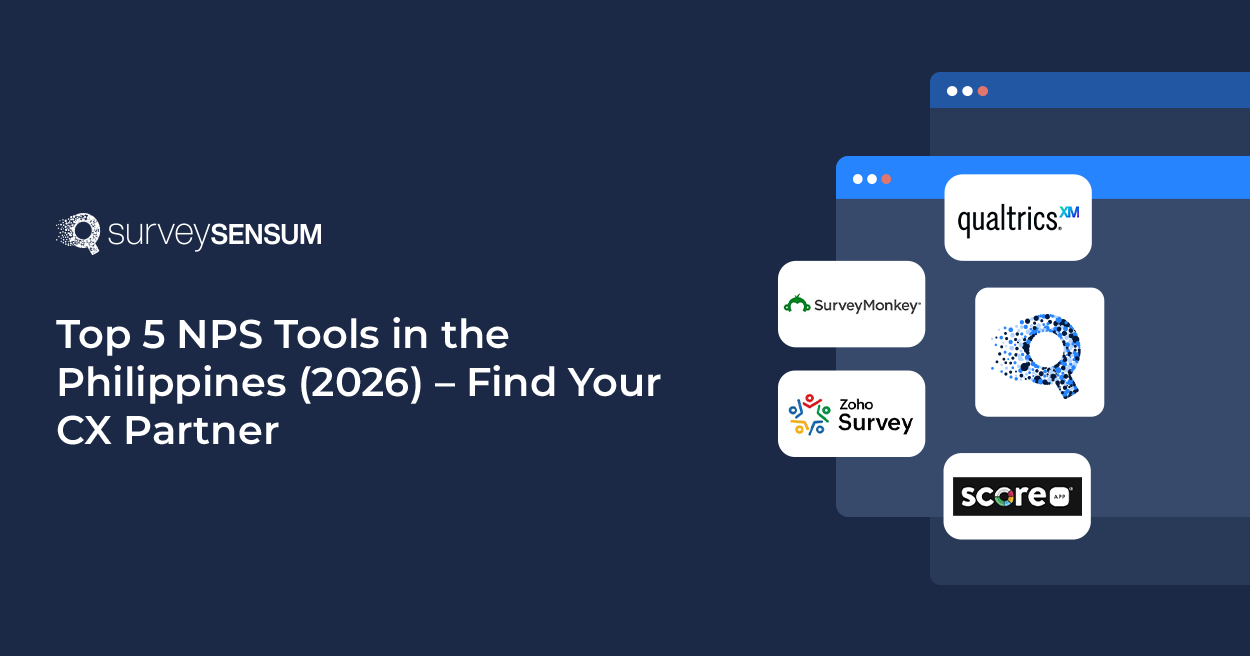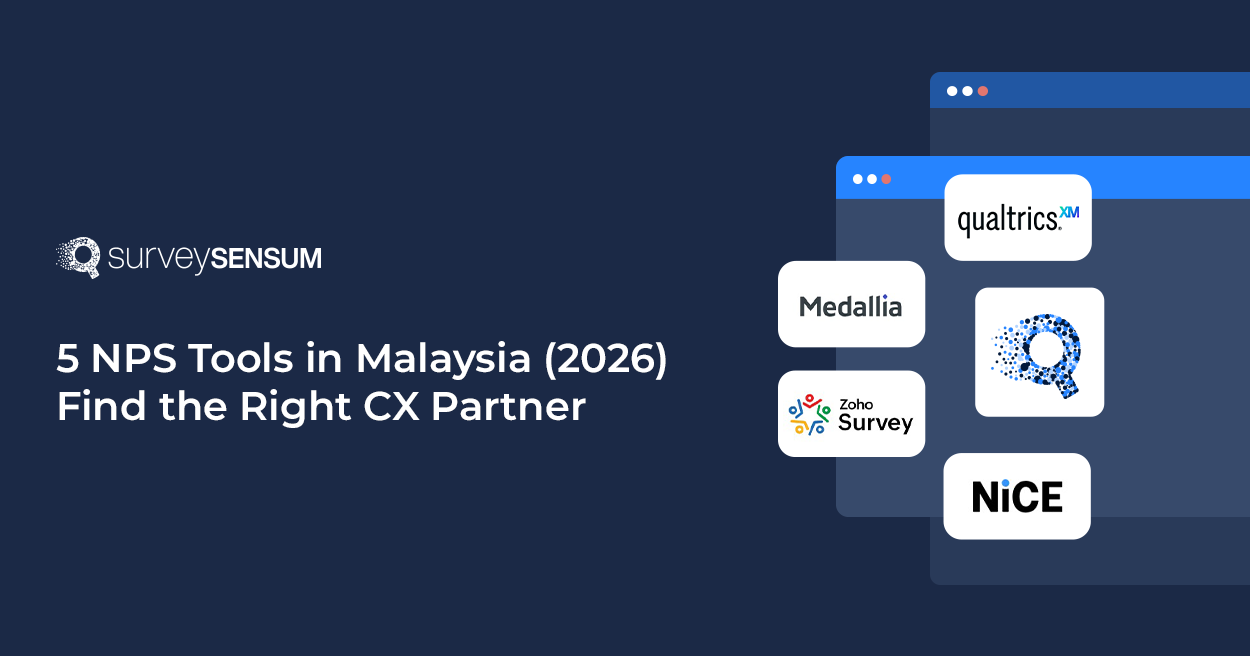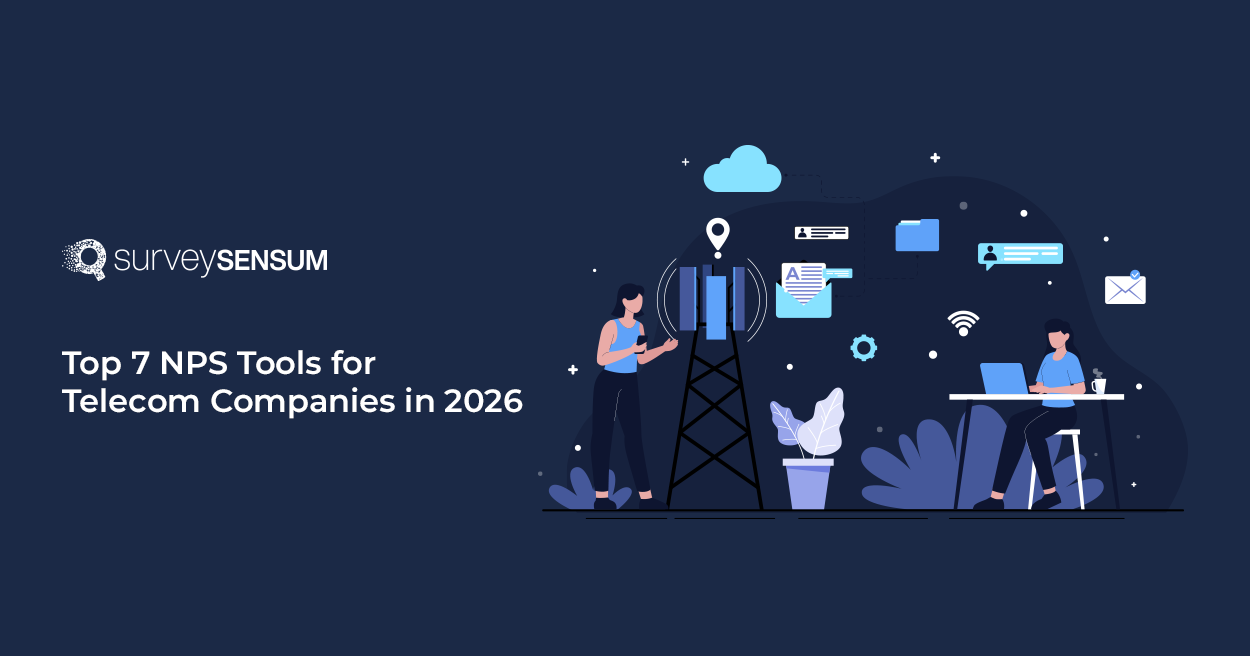

In the world of CX, metrics are often treated like gospel. However, not all numbers are equal when it comes to truly understanding your customers.
Enter – NPS—a metric that unveils the heart of your customer experience.
The importance of customer experience in driving loyalty, advocacy, and revenue is secret to none.
In fact, 89% of companies now compete primarily on CX, the stakes are higher than ever – 89% of customers will switch to a competitor after just one negative interaction and 22% will cut down their spending.
So, how does NPS help you maintain a pulse on CX?
Let’s find out what NPS is, how it’s calculated, and the benefits it brings to your business.
101 of Net Promoter Score
NPS helps you evaluate your customers’ satisfaction with your product or service. To find it out, you can ask your customers the question developed by Fred Reichheld and Bain & Company – “How likely are you to recommend our company/product/service to a friend or colleague?”
Based on their answer, you classify them into three groups:
- Detractors (0-6): These are your unhappy customers. They’re the ones who could actively discourage others from using your product or service.
- Passives (7-8): These folks are lukewarm. They’re not likely to spread the word, but they’re not actively dissuading others.
- Promoters (9-10): These are your brand champions. They love your product/service/brand and are more likely to spread the word.
But, How Does NPS Work?

Calculating NPS is straightforward but impactful. Here’s how you do it:
STEP 1: Launch the NPS survey with the NPS question, “On a scale of 0-10, how likely are you to recommend us to your friends, family, or colleagues)?”
STEP 2: Categorize Responses: Segment the survey responses into Detractors (0-6), Passives (7-8), and Promoters (9-10) based on the scores.
STEP 3: Calculate Score: Evaluate the difference between the percentage of Detractors from the percentage of Promoters to get your NPS.
%Promoters is calculated as (Number of Promoters / Total Respondents) x 100
%Detractors is calculated as (Number of Detractors / Total Respondents) x 100
NPS Formula: %Promoters – %Detractors
Once you calculate your NPS, you’ll get a score that ranges from -100 to +100. A positive score is a solid start, showing that more of your customers are satisfied and willing to recommend your brand.
Measure, analyze, and perfect your NPS with SurveySensum’s NPS Software!
Simple, right? But why are we doing it?
Let’s understand NPS benefits for your business.
7 Must-Know NPS Benefits for Your Business OR Top 7 NPS Benefits That Drive Business Growth
NPS benefits various business functions, from customer support to product development and marketing. Here’s how.
1. Simplicity
NPS is one of the easiest CX metrics to implement and manage (if done correctly!). The simplicity & standardization of the NPS question saves you time and makes your customers feel more comfortable responding, often leading to higher response rates.
2. Cost-Effectiveness
NPS offers you a cost-effective way to gather customer feedback without the high expenses of hiring external research firms. Regularly running NPS surveys in-house, paired with other research methods keeps costs low while providing insights that benefit multiple teams across your organization.
3. Customer Satisfaction
70% of companies rely on NPS to measure and monitor customer satisfaction. This widespread use highlights how valuable regular NPS is. Regularly tracking it can help pinpoint exactly where your customers are feeling frustrated or where you’re exceeding expectations. This insight enables you to take action to address pain points and improve the aspects of your service/product. This leads to a more satisfied, loyal customer base that is more likely to recommend your brand to others.
4. Growth Prediction
The benefits of Net Promoter Score as a growth indicator are substantial. While it may not be the only predictor, it strongly correlates with your business success in several ways:
- Customer loyalty and repeat business are positively correlated with high NPS scores. In fact, promoters are 5X more likely to repurchase than detractors.
- Better customer retention and revenue lead to higher NPS scores. Even a single-point increase in NPS leads to a 2% boost in revenue!
- Research reveals that companies with top-tier NPS deliver shareholder returns that are 2-3X higher than the market average. This highlights how customer loyalty, as reflected in high NPS, can drive financial success and value for investors.
5. Customer Experience
Two-thirds of Fortune 1000 companies use NPS to measure their customer experience. While other metrics focus on specific interactions, NPS offers a broader view of your overall customer experience. It provides a vital view of customer sentiment by assessing how likely customers are to recommend your brand.
This relationship metric helps you view your customers as relationships rather than mere transactions. It is a strong indicator of long-term loyalty and can drive business growth.
6. Flexibility
NPS can be adapted to suit your needs. Some companies deploy NPS surveys once or twice a year, while others use smaller, more frequent “drip NPS” surveys to track customer sentiment continuously. This flexibility allows you to monitor changes over time and make incremental improvements.
However, I’ve seen that many organizations struggle to understand when to send the NPS survey or they send it at the wrong time. Well, go through this deep dive into it.
7. Proactive Problem-Solving
While the core NPS question provides a snapshot of overall sentiment towards your brand, the real value lies in the follow-up open-ended questions. These questions allow your customers to offer insights into their experiences and why they feel that way. This data, when analyzed with text analytics software, reveals the deeper sentiments behind the scores.
For instance, SurveySensum’s Text Analytics Software uses natural language processing and machine learning to sift through customer feedback. The tool tags and segments relevant keywords into meaningful categories, identifying top trends, customer complaints, etc. With these insights, you can stay ahead of potential issues by identifying persistent problems before they escalate and taking action in a prioritized manner.
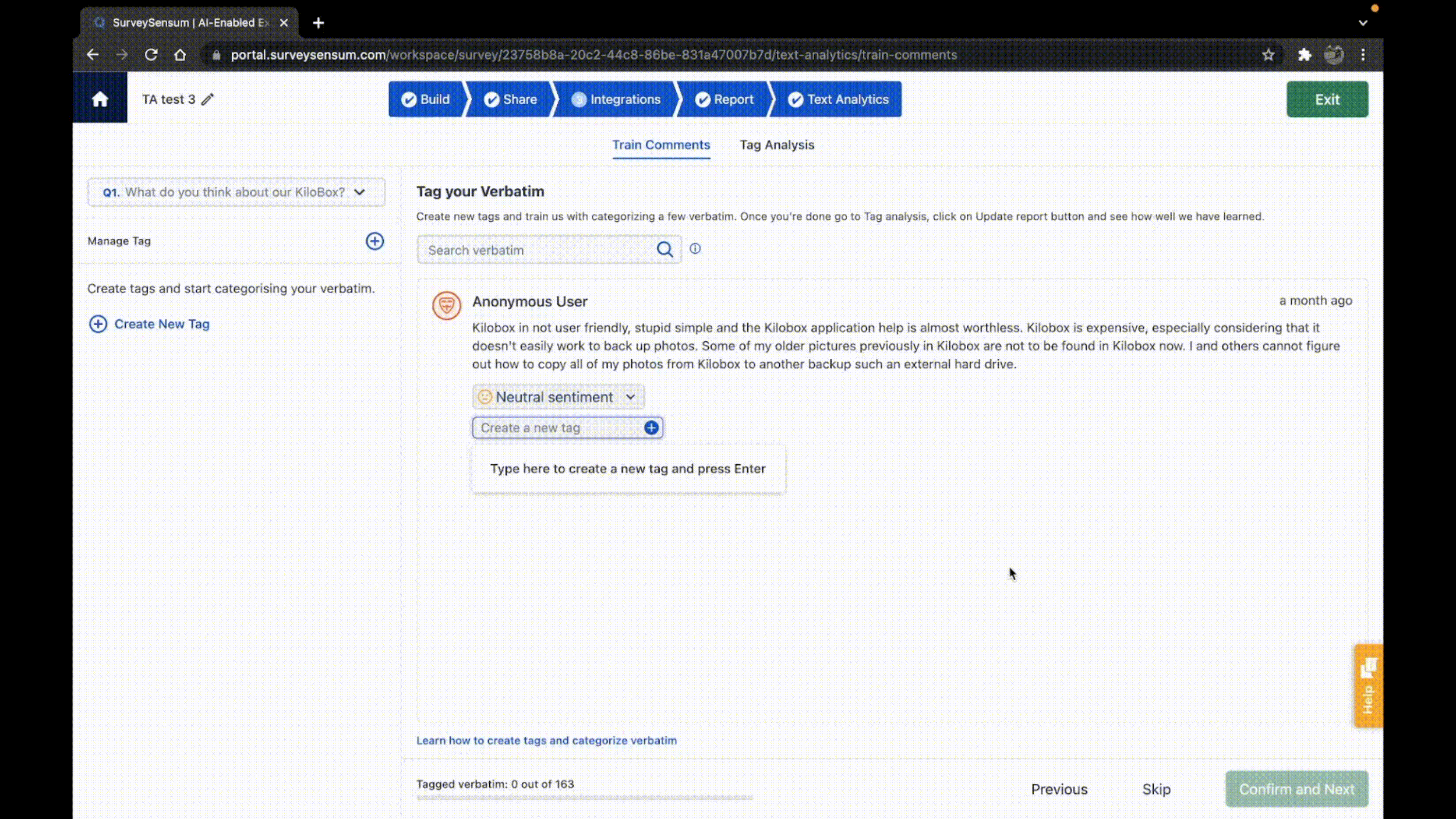
Turn customer feedback into foresight—deep dive into customer sentiment with our Text Analytics Software and spot issues before they arise!
Now that we have established the benefits of Net Promoter Score, let’s dive into the key steps for collecting NPS feedback.
7 Steps to Gather NPS Feedback
To leverage NPS in your business you need thoughtful planning and strategic execution.
1. Establish Your Goals and Objectives
Initially, take the time to specify what you aim to accomplish with NPS. Are you looking to measure customer loyalty, assess satisfaction, or identify areas for improvement? Align your goals with the direction of your business objectives. This clarity will help you tailor your NPS approach and make it more impactful.
2. Select the Optimal Survey Method and Timing
When it comes to gathering feedback through NPS surveys, selecting the right method and timing is key to obtaining accurate and actionable insights.
Most businesses use NPS as a transaction metric and send NPS surveys immediately after an interaction, service, or offer. However, since NPS measures loyalty, it should NOT be used as a transactional CX metric. Businesses need to give time to their customers to experience the product as a whole and themselves to build relationships with the customers – only then is the ideal time to leverage the maximum potential of the NPS program!
3. Design Your Survey Question Carefully
Yes, the NPS loyalty question is important. But what most folks forget is adding follow-up questions in the survey. Let’s say Max gives a 4 on the NPS scale, but if you haven’t added the open-ended question, you’d never know the reason behind his score.
So, don’t forget to add the follow-up questions to uncover the ‘WHY’ behind the NPS score.
4. Mix Operational Data with User Experiences
You must capture operational data alongside experiential insights. For instance, if you encounter a spike in negative responses among customers who utilize a particular product, you can more effectively identify and resolve issues.
When running your NPS surveys, include information such as the products purchased or services utilized. This helps you to link feedback to specific customer experiences, allowing for more accurate issue identification.
5. Collect Feedback from a Sample
The precision of NPS outcomes is significantly influenced by the size of the sample. That’s why you must gather feedback from a diverse segment of your customers. This will give you a well-rounded view of sentiment, help you spot trends across different groups, and make better decision-making.
6. Analyze and Act on the Data
Gathering NPS feedback is one part of the job, what makes it lucrative is when you actually analyze the feedback and take relevant action on it – basically closing the feedback loop.
But how to do it? Here’s how you can piece together your NPS puzzle to boost customer sentiment and loyalty.
- Tag Your Feedback: Begin by tagging NPS responses by department, functionality, or feature to spot common themes and assign issues to the right teams. For large volumes, you can go a smarter way and use AI-powered Text and Sentiment Analysis to automate tagging & track customer sentiment.
- Identify Top Issues: Next, find tags with high frequency, negative sentiment, and low NPS scores to find key issues. Also, check positive tags to recognize strengths and areas to promote.
- Dive Deeper and Validate: To thoroughly understand complaints in detail, cross-reference with support tickets, and engage with front-line employees and customers.
- Allocate Issues: Assign issues to the relevant departments with action plans. Conduct regular meetings to align priorities and integrate feedback from various sources.
- Take Action: With issues to address, you can evaluate:
- How many customers are affected and the scope of impact?
- How issues affect retention, acquisition, and churn?
- What workload is required for each task and adjust priorities accordingly?
Don’t forget to communicate with customers to show that their feedback is being acted upon.
7. Be Consistent with Your NPS Program
The NPS program is not a one-time thing. Doing it once will not take you anywhere. You need to run it consistently to:
- Understand if the actions taken had any impact
- Track the progress – if your NPS score is increasing
- Identify the top NPS drivers to increase the NPS score
By consistently analyzing this data, you can evaluate the effectiveness of new strategies, assess real changes in customer sentiment, and make decisions based on long-term trends.
Simply follow these steps, and you’ll be on your way to leveraging the benefits of Net Promoter Score to enhance your customer experience and drive business success.
Get instant insights with SurveySensum’s Real-Time Reporting and In-Depth Analysis. Track responses, resolve issues on the fly, and uncover key customer sentiments with our powerful reports.
Even industry giants like Apple and Tesla recognize the benefits of Net Promoter Score, but let’s dive into some of its limitations to get a clearer picture of how it fits into the bigger customer feedback landscape.
The Limitations of NPS: What You Need to Know
Here’s a closer look at what NPS cannot tell you.
1. Recognize CX Limitations
NPS is valuable but not infallible. Customers often express their negative experiences more than positive ones. This means your most loyal customers, who may be the quietest, might not always share feedback. Therefore, it’s essential not to rely solely on NPS.
To maximize NPS benefits, it’s important to integrate it with other feedback methods. Follow-up questions delve into the reasons behind customers’ feelings. Asking questions like, “How can we enhance our service? Or how can we prevent issues in the future?” can offer valuable insights into understanding and addressing customer concerns.
As the saying goes, “Teamwork makes the dream work.” While NPS gives a good overview of customer experience, combining it with other CX metrics —such as CSAT and CES —provides a more complete view of CX. This approach helps identify problems, improve service quality, and ensure a seamless experience across all interactions.
Ready to dig deeper into customer sentiments? SurveySensum’s Conditional Logic lets you tailor follow-up questions to Net Promoter Scores for better insights!
2. Focus on Trends, Not Just Numbers

Instead of focusing solely on the current NPS score, monitor its trends over time. Is the number of promoters increasing? This suggests that your brand’s reputation and customer satisfaction might be improving. Conversely, a decrease in promoters relative to passives could signal potential issues, such as rising churn rates. The trend line offers more insight into whether your customer relationships are improving or deteriorating, guiding your strategic decisions.
3. Watch Out for Cultural Bias
Cultural backgrounds can significantly affect how customers respond to NPS surveys. For instance, customers from South Korea may exhibit a more reserved approach, often opting for moderate scores, whereas customers from the United States might utilize the entire scoring spectrum, indicating more pronounced levels of satisfaction or dissatisfaction.
This cultural influence can distort your data. To counteract this, customize the language and scale of your NPS surveys to match the cultural context of each target group. Analyzing NPS scores within specific cultural or regional segments can offer a clearer understanding. Adding qualitative feedback, such as open-ended questions, can also capture insights that align with cultural expectations.
Break down language barriers, tackle cultural biases, and get accurate feedback with Surveysensum’s Multilingual Surveys.
4. Importance of Sample Size
NPS outcomes are significantly influenced by the size of the sample. Limited sample sizes can result in distorted or unreliable data, as they may fail to accurately reflect the larger customer demographic. For instance, collecting NPS feedback from just five users is unlikely to yield significant insights. To ensure your data is actionable, collect responses from a sufficiently large and diverse customer group. This will provide a more accurate picture of overall customer satisfaction and better decision-making.
5. Overemphasis on Promoters
NPS tends to focus heavily on Promoters, potentially overlooking the subtleties of Passives and Detractors. This can skew your understanding of the customer base and you may miss chances to convert Passives into Promoters. Remember – loyal customers don’t always act as brand advocates, and not all Promoters drive tangible business outcomes.
Wrapping Up
Understanding and leveraging NPS benefits can transform your customer experience strategy. By harnessing the power of NPS, you can measure customer loyalty, drive meaningful improvements, and foster lasting relationships.
SurveySensum enhances these NPS benefits with its robust features designed to optimize how you collect and act on feedback. Elevate your CX game with seamless integrations to tools like Slack and Zendesk, and connect with your customers across channels. Personalize surveys in any language to engage a global audience and stay on top of issues with real-time alerts and reports. With SurveySensum, turning NPS data into impactful actions is as easy as 1, 2, 3!
Ready, set, survey with SurveySensum’s NPS Software. With its power-packed features, you can automate, personalize, and deploy your NPS survey in no time!








